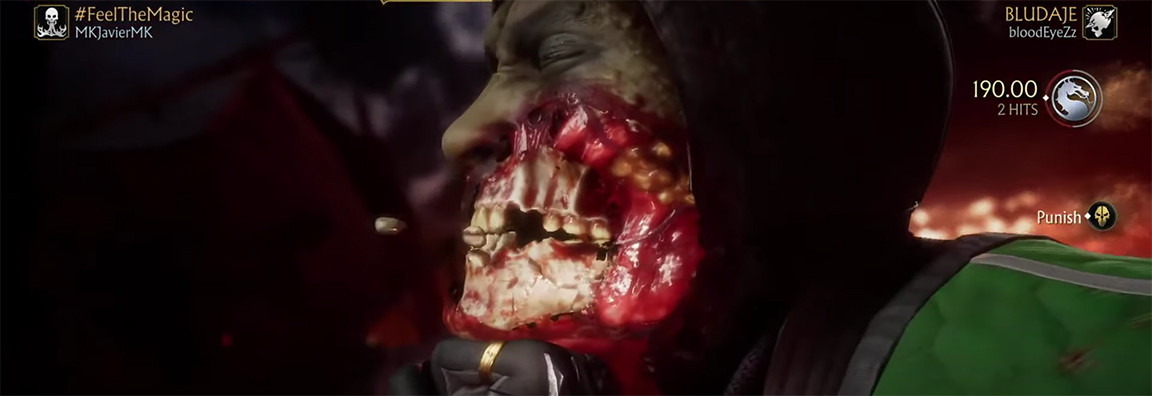Learning opponents’ habits throughout sets is the sign of a top player. There are multiple games to give players a chance to adapt, so that skill and counter-play can develop. Players caught off guard once or twice in shorter matches would effectively lose thanks to gimmicks or surprises. Sets provide the opportunity to condition players for better reads.
You’ll want to learn how to read opponents if you’re interested in tournaments or ranked matches. The first step is understanding the game: How does your character play, what options does your opponent have, and what are the fundamental mechanics of the game.
Better understand what sets apart reads from reactions to get better at anticipating the other player’s next move.
What are fighting game reads?
A read is when you anticipate your opponent’s next move and punish it. From the other player’s perspective it looks like you read their mind.
For example, maybe you teleported behind them before their attack animation started and immediately transitioned into a combo. Another instance is when you read a roll. Instead of rolling to safety, your opponent is back in disadvantage eating move strings.
Hard reads are big commitments. While reads often result in safe punishes like bread and butters, hard reads throw out risky options that players normally can’t use due to slower frame data. As a result, they’ll deal more damage both physically and mentally. There’s nothing more demoralizing than getting countered before you perform the inputs.
Reads can look like simple guesses to less experienced players, but they’re so much more.
How to get reads in the FGC?
The best way to get reads is to pay attention. Keep your eyes on the opponent instead of your own character.
Ask yourself:
- What do they do when the match begins?
- Do they rush in or do they wait?
- What’s their favorite option?
This line of thinking throughout matches will help you get better reads.
Read example
Here’s an example of a read. Let’s say you’re fighting Jacqui Briggs. You know one of her main moves is Bionic Dash, but it’s quick and hard to react to. Basically, you have to anticipate the move and know that you can whiff punish it if you duck. Otherwise, it is safe on block.
Reads are all about knowing what the other player is likely to do next based on the game’s current situation (health and time) and the opponent’s habits (For instance, do they always go for the same move in the corner?).
What are reactions?
Reactions are less anticipation and more acting in response to something. In other words, a reaction is when you notice what move or option an opponent is performing, then act accordingly to block or counter.
Typically, these are moves that take up a start up time of 16 frames or more, so you can see it coming. If a move is too fast, then it might be unreactable, forcing you to block based on when the opponent tends to go for the aforementioned option. This is more of a defensive read.
Reaction example
Most overheads in Mortal Kombat 11 Ultimate are slow and can be blocking high or countered on reaction.
It can be tough to defend against a mix of throws, jump, and other options. That’s why the best defense is a combination of reads and reactions.
How to get better reads and reactions?
One way to get better at reading and reacting is to understand how people ‘autopilot.’ Players often resort to ‘autopilot’ or the same tactics and techniques in quick succession given specific circumstances like if they’re in the corner or neutral. Everyone’s autopilot is developed based on their practice and experience.
Once you learn these patterns, you will be able to counter efficiently and make short work of them. Top level players turn these adaptations into advanced mind games of baits, reads, and reactions.
This comes from a deep understanding of the game.
The more knowledge you have about player tendencies, matchups, and fundamentals, the better you’ll get at picking up habits and conditioning.
What is conditioning?
Good players use moves like fireballs and slides to “condition” opponents to expect that option in the future. The brain is always looking for the most efficient way to process information, so it will expect a similar move if it’s already seen something in a similar situation.
Punishing that anticipation is the payoff of conditioning. A simple example is if your opponent conditions you to always block high after using a specific move. Fast forward to the second game in the set and they go for a grab in place of that overhead option. There are different degrees of conditioning that add even more layers to already complex fighting games.
Being aware of this strategy is great for getting reads and staying one step ahead in any matchup.
